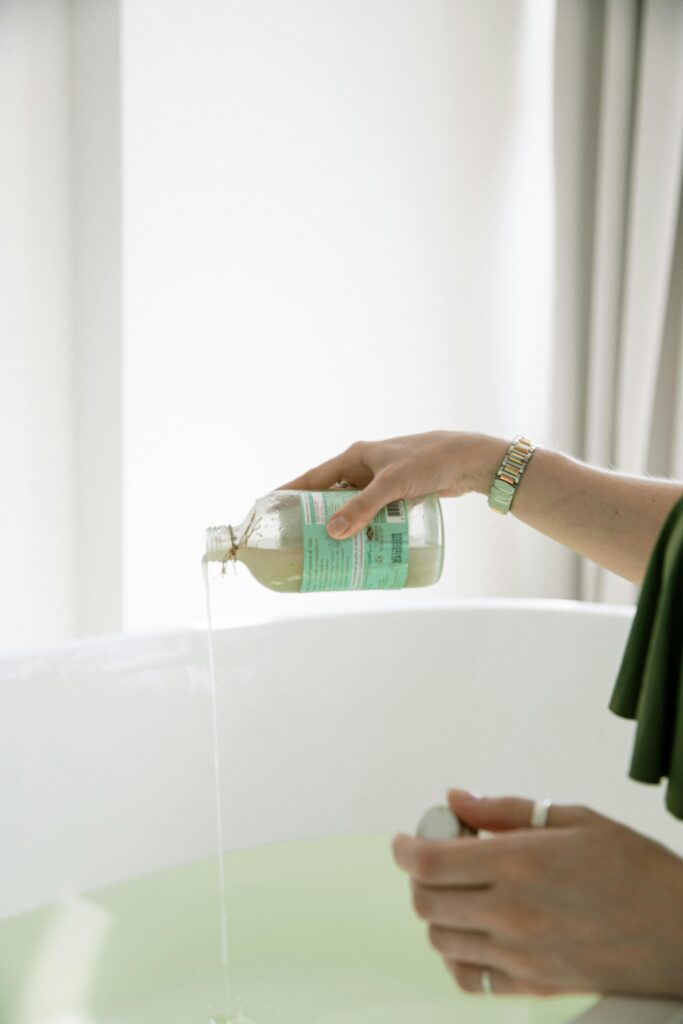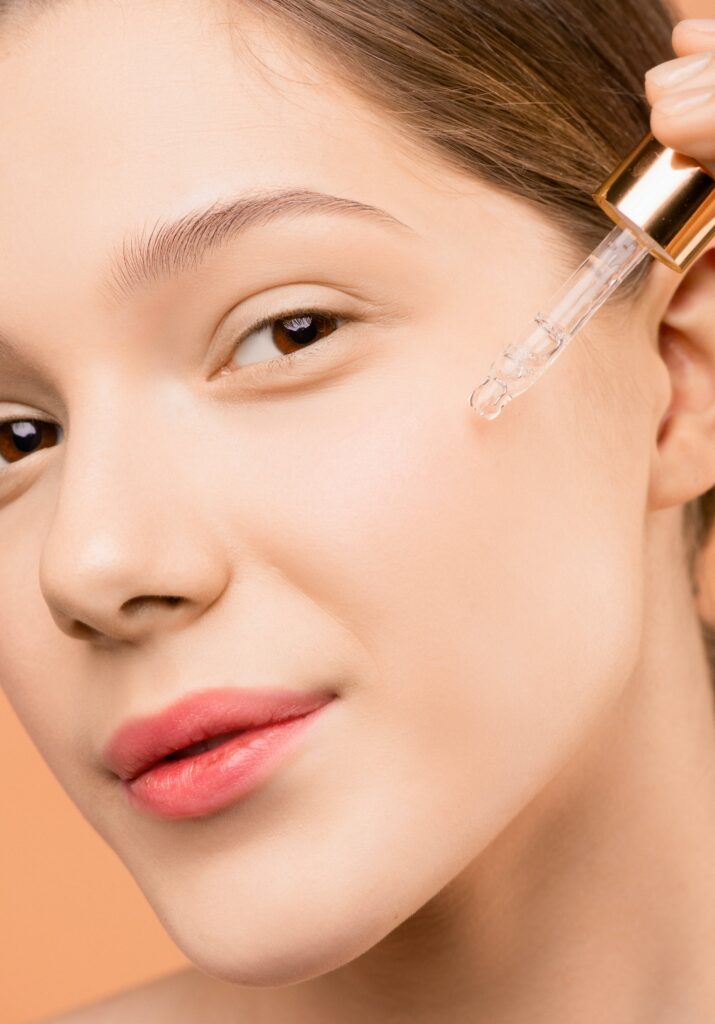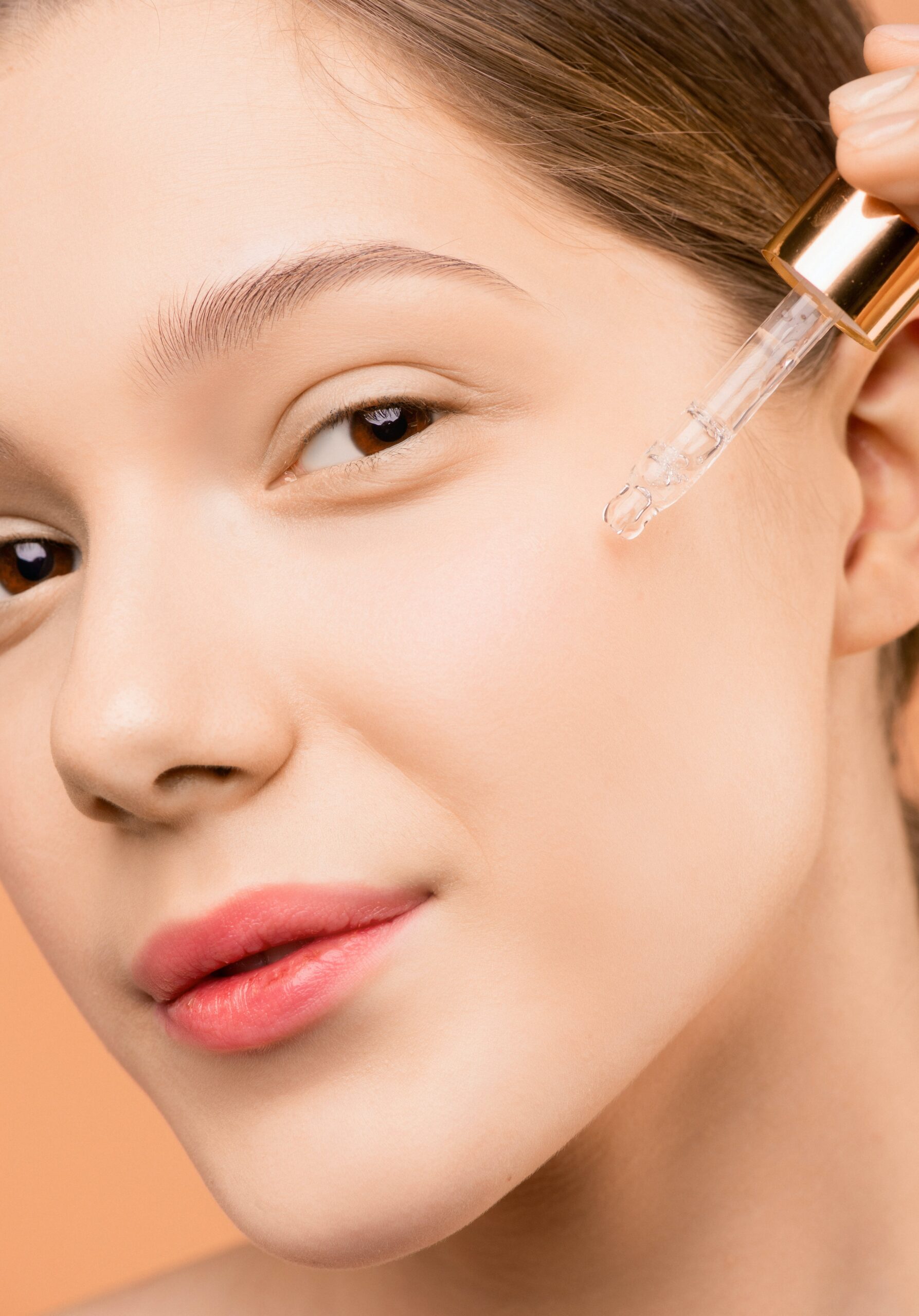If you’ve been searching for a way to tackle redness and sensitivity in your skin, look no further! This article is here to provide you with some helpful tips and tricks to combat these common skincare concerns. Whether you’re dealing with occasional redness or persistent sensitivity, we’ve got you covered. Say goodbye to discomfort and hello to a healthier, more balanced complexion. So, let’s jump right in and discover the best ways to soothe and restore your skin’s natural beauty.
Understanding the Causes of Redness and Sensitivity
Identifying the Different Types of Skin Redness
When it comes to understanding and combatting redness and sensitivity in the skin, it’s important to first identify the different types of skin redness. One common type is rosacea, which is characterized by persistent redness, visible blood vessels, and sometimes, small red bumps. Another type is contact dermatitis, which occurs when your skin reacts to an irritating substance or allergen. Additionally, skin conditions like eczema can also result in redness and sensitivity.
Recognizing Common Triggers for Skin Sensitivity
To effectively manage redness and sensitivity, it’s crucial to recognize the common triggers that can exacerbate these issues. Some of the most common triggers include harsh skincare products, environmental factors such as UV radiation and extreme temperatures, and even certain ingredients in makeup. Stress and a poor diet can also contribute to redness and sensitivity, so it’s important to take these factors into consideration as well.
Understanding the Role of Genetics and Environment
Genetics and the environment both play a significant role in the development of redness and sensitivity in the skin. Some individuals may be genetically predisposed to having more sensitive skin, making them more prone to redness and irritation. However, environmental factors can also greatly influence the condition of our skin. Exposure to pollution, harsh weather conditions, and even the foods we eat can impact the appearance and sensitivity of our skin.
Establishing a Skincare Routine for Redness and Sensitivity
Choosing Gentle and Non-Irritating Cleansers
When crafting a skincare routine for redness and sensitivity, it’s crucial to start with a gentle and non-irritating cleanser. Look for cleansers that are specifically formulated for sensitive skin and free of harsh, potentially irritating ingredients such as fragrances and sulfates. Opt for creamy or lotion-based cleansers that will effectively cleanse without stripping the skin of its natural oils, which can further contribute to redness and sensitivity.
Using Moisturizers and Barrier Creams
Moisturizing is a vital step in any skincare routine, but it becomes even more important when dealing with redness and sensitivity. Look for moisturizers that are fragrance-free, hypoallergenic, and formulated for sensitive skin. Consider using barrier creams, which create a protective layer on the skin and help to prevent moisture loss. These creams can provide extra relief for irritated and sensitive skin.
Incorporating Soothing Ingredients into Your Skincare
When addressing redness and sensitivity, it can be beneficial to incorporate soothing ingredients into your skincare routine. Look for products that contain ingredients such as aloe vera, chamomile, green tea, or oat extract, as these can help to calm and soothe the skin. Additionally, products formulated with ceramides and hyaluronic acid can help to strengthen the skin barrier and retain moisture, promoting overall skin health.
Avoiding Harsh Exfoliants and Scrubs
While exfoliating is important for promoting a healthy complexion, it’s essential to avoid harsh exfoliants and scrubs when dealing with redness and sensitivity. These abrasive products can further irritate the skin and exacerbate redness. Instead, opt for gentle exfoliating products that contain chemical exfoliants such as alpha hydroxy acids (AHAs) or beta hydroxy acids (BHAs). These types of exfoliants are milder and less likely to cause irritation.

Protecting Your Skin from Environmental Aggressors
Applying Sunscreen Daily
Protecting your skin from UV radiation is crucial in preventing and reducing redness and sensitivity. Make sure to apply a broad-spectrum sunscreen with SPF 30 or higher daily, even on cloudy days. Look for sunscreens that are specifically formulated for sensitive skin and free of potential irritants. Don’t forget to reapply throughout the day, especially if you’re spending time outdoors.
Shielding Your Skin from Extreme Temperatures
Extreme temperatures can often trigger redness and sensitivity in the skin. To protect your skin from these environmental aggressors, it’s important to shield your skin from extreme heat or cold. In hot weather, seek shade and wear a wide-brimmed hat and lightweight, breathable clothing. In cold weather, bundle up with scarves and hats to protect your face from harsh winds and freezing temperatures.
Protecting Against Pollution and Other Environmental Factors
Pollution and other environmental factors can also contribute to redness and sensitivity in the skin. To minimize exposure, consider using a physical barrier, such as a scarf or mask, when in heavily polluted areas. Additionally, incorporating an antioxidant-rich serum into your skincare routine can help combat the free radicals caused by pollution, providing added protection for your skin.
Diet and Lifestyle Changes to Reduce Redness and Sensitivity
Choosing an Anti-Inflammatory Diet
Incorporating an anti-inflammatory diet into your lifestyle can greatly help in reducing redness and sensitivity in the skin. Focus on consuming foods that are rich in antioxidants, such as fruits, vegetables, and whole grains. Omega-3 fatty acids, found in foods like fatty fish and flaxseeds, can also help reduce inflammation. Avoiding processed foods, sugar, and excessive alcohol intake can also have a positive impact on your overall skin health.
Avoiding Triggers such as Spicy Foods and Alcohol
Certain foods and drinks can act as triggers for redness and sensitivity in the skin. Spicy foods, alcohol, and caffeine are particularly known to exacerbate these issues. Consider reducing or eliminating these triggers from your diet to help reduce redness and sensitivity. Instead, focus on hydrating beverages such as water and herbal teas, and opt for milder flavors when it comes to spices and seasonings.
Managing Stress and Its Impact on Your Skin
Stress can have a significant impact on the health and appearance of our skin. To combat redness and sensitivity caused by stress, incorporate stress-management techniques into your daily routine. This could include practicing mindfulness and meditation, engaging in physical activity, or finding hobbies that help you relax. Taking care of your mental and emotional well-being can positively impact your skin’s condition.

Seeking Professional Advice for Redness and Sensitivity
Consulting a Dermatologist
If you’re struggling with persistent redness and sensitivity, it may be beneficial to consult a dermatologist. They can examine your skin, assess any underlying conditions, and provide personalized recommendations for managing and treating redness and sensitivity. They may also prescribe topical medications or recommend further diagnostic tests, if necessary.
Considering Allergy Testing
In some cases, allergies to certain substances or ingredients may contribute to redness and sensitivity in the skin. If you suspect allergies are playing a role, considering allergy testing can help identify specific triggers. Allergy testing can be done by a dermatologist or allergist and can provide valuable information that can guide your skincare routine and lifestyle choices.
Exploring Prescription Treatments
For more severe cases of redness and sensitivity, prescription treatments may be necessary. Consult with your dermatologist to discuss options such as prescription-strength topical creams or oral medications. These treatments can help manage inflammation and soothe sensitive skin, providing relief from redness and sensitivity.
Treating Redness and Sensitivity at Home
Applying Cold Compresses or Ice Packs
When experiencing a flare-up of redness and sensitivity, applying cold compresses or ice packs can help to reduce inflammation and soothe irritated skin. Wrap the cold compress or ice pack in a soft cloth and gently apply it to the affected area for 10-15 minutes. Be sure not to leave it on for too long, as prolonged cold exposure can have adverse effects.
Using Over-the-Counter Topical Creams
Over-the-counter topical creams can provide temporary relief for redness and sensitivity. Look for creams that contain ingredients such as aloe vera, chamomile, or colloidal oatmeal, as these can help calm and soothe the skin. Be sure to follow the instructions on the packaging and discontinue use if any irritation occurs.
Trying Natural Remedies like Aloe Vera or Green Tea
Natural remedies like aloe vera gel and green tea can also help alleviate redness and sensitivity. Aloe vera has soothing properties and can be directly applied to the skin, while green tea can be used as a toner by steeping it in hot water, allowing it to cool, and then applying with a cotton pad. These natural remedies can provide gentle relief for irritated skin.

Creating a Redness and Sensitivity-Friendly Makeup Routine
Choosing Makeup Products with Anti-Inflammatory Ingredients
When dealing with redness and sensitivity, it’s important to choose makeup products that contain anti-inflammatory ingredients. Look for products that are fragrance-free, hypoallergenic, and specifically formulated for sensitive skin. Avoid products that contain potential irritants such as alcohol and heavy fragrances. Makeup with soothing ingredients like aloe vera or chamomile can help calm redness and minimize skin sensitivity.
Using Color Correcting Techniques
Color correcting techniques can be an effective way to minimize redness and even out skin tone. Utilize green-tinted primers or color correcting concealers to neutralize redness before applying foundation. These products can help create a more even canvas for your makeup and reduce the need for heavy coverage, which can further irritate the skin.
Removing Makeup Gently and Thoroughly
When it comes to removing makeup, it’s important to do so gently and thoroughly. Use a gentle makeup remover that is specifically formulated for sensitive skin. Avoid harsh rubbing or tugging, as this can further irritate your skin. Follow up with a gentle cleanser to ensure all traces of makeup are removed, and then moisturize to replenish your skin’s hydration.
Maintaining a Healthy Skincare Routine
Cleansing and Moisturizing Twice Daily
To maintain healthy skin and prevent redness and sensitivity, it’s crucial to cleanse and moisturize your skin twice daily. Choose a gentle cleanser that suits your skin type and follow up with a moisturizer that is suited for sensitive skin. Cleansing removes impurities and excess oil, while moisturizing helps to replenish hydration and strengthen the skin barrier.
Exfoliating Regularly, but Gently
Regular exfoliation can help remove dead skin cells and promote a more radiant complexion. However, it’s important to exfoliate gently when dealing with redness and sensitivity. Opt for chemical exfoliants, such as AHAs or BHAs, rather than harsh physical scrubs. These chemical exfoliants will gently dissolve dead skin cells without causing irritation or redness.
Using Face Masks for Soothing and Nourishing Effects
Incorporating face masks into your skincare routine can provide additional soothing and nourishing effects for redness and sensitive skin. Look for masks that are specifically formulated for sensitive skin and contain ingredients such as aloe vera, chamomile, or colloidal oatmeal. These masks can help reduce inflammation and provide much-needed hydration to the skin.
Adopting a Consistent Routine to Manage Redness and Sensitivity
Consistency is key when it comes to managing redness and sensitivity in the skin. Establishing a daily skincare routine tailored to your specific needs and sticking with it can help improve the overall health and appearance of your skin. Be patient with your skincare routine, as it may take time for results to show. Remember to monitor any changes or improvements in your skin and adjust your routine accordingly.

Considering Alternative Therapies for Redness and Sensitivity
Exploring Acupuncture or Acupressure
Alternative therapies like acupuncture or acupressure have been used for centuries to help alleviate various health concerns, including skin issues. These practices involve the application of gentle, targeted pressure to specific points on the body. Some individuals find that acupuncture or acupressure sessions can help reduce redness and sensitivity in their skin, providing a holistic approach to skincare.
Trying Facial Massage Techniques
Facial massage can be a wonderful way to promote circulation, relaxation, and potentially reduce redness and sensitivity. Use gentle, upward motions to massage your face, focusing on areas of redness or tightness. This can help increase blood flow to the area, delivering nutrients and oxygen to the skin cells. You can use your hands or incorporate tools such as a jade roller or gua sha to enhance the massage experience.
Considering Herbal or Homeopathic Remedies
Herbal and homeopathic remedies have long been used to address various skin concerns, including redness and sensitivity. Consult with a qualified herbalist or homeopath to explore potential options that may work well for your specific needs. They can guide you towards herbs or homeopathic remedies that have anti-inflammatory or soothing properties, helping to calm and nourish your skin from within.
Preventing and Addressing Flare-Ups of Redness and Sensitivity
Identifying and Avoiding Common Triggers
To prevent and address flare-ups of redness and sensitivity, it’s crucial to identify and avoid common triggers. Keep a skincare diary to track any products or environmental factors that seem to worsen your redness and sensitivity. Once identified, make a conscious effort to eliminate or minimize exposure to these triggers to help maintain calm and balanced skin.
Implementing Cold Compresses to Reduce Inflammation
In the event of a flare-up, implementing cold compresses can help reduce inflammation and soothe irritated skin. As mentioned earlier, gently apply a cold compress or ice pack wrapped in a soft cloth to the affected area for 10-15 minutes. This can provide temporary relief and help calm redness and sensitivity.
Using Over-the-Counter or Prescription Medications
In some cases, over-the-counter or prescription medications may be necessary to effectively manage flare-ups of redness and sensitivity. Over-the-counter hydrocortisone creams can help reduce inflammation and alleviate itching, while antihistamines can provide relief from allergic reactions. If symptoms persist or worsen, consult with a dermatologist who can prescribe targeted medications for your specific needs.
By understanding the causes of redness and sensitivity, establishing a skincare routine tailored to address these concerns, adopting a healthy lifestyle, seeking professional advice when needed, and incorporating alternative therapies, you can effectively combat redness and sensitivity in your skin. Remember, consistency and patience are key in achieving and maintaining a healthy and balanced complexion.






